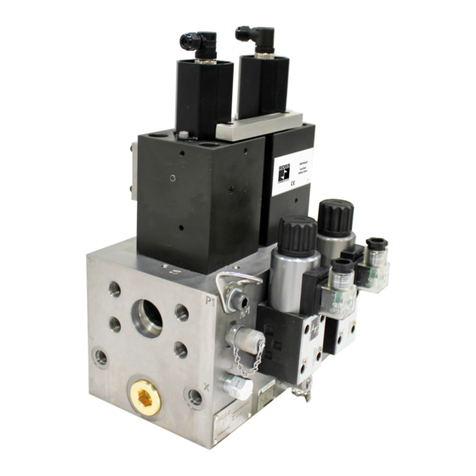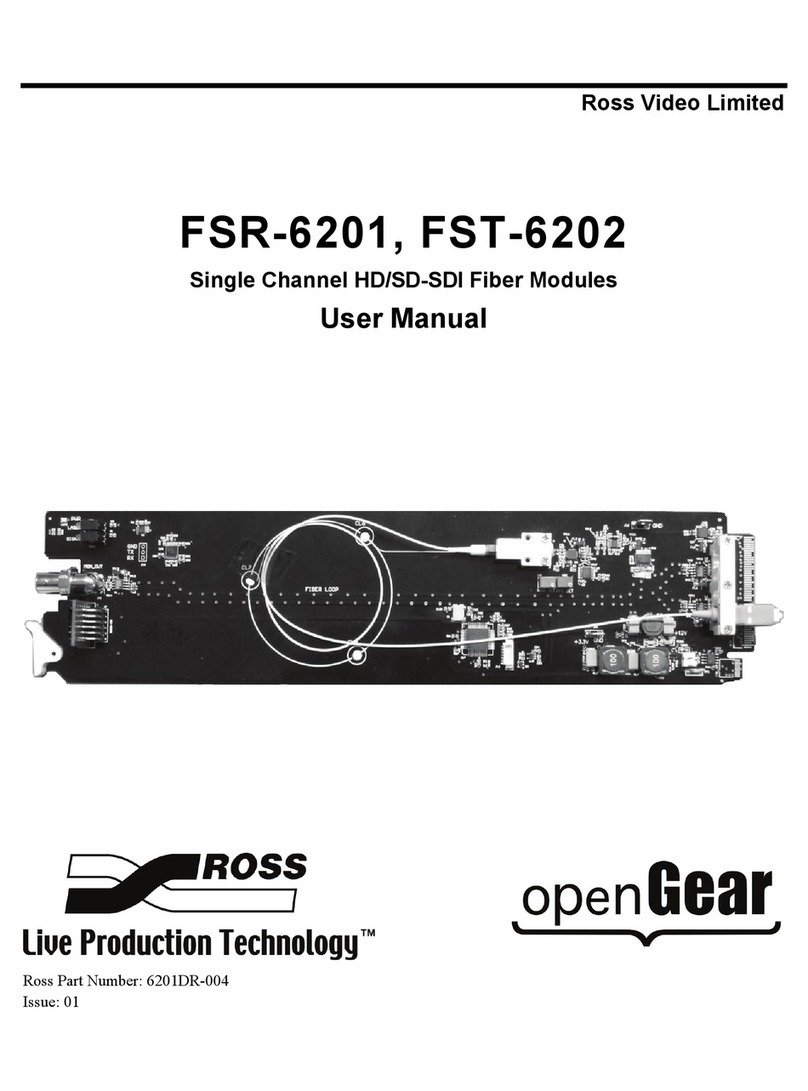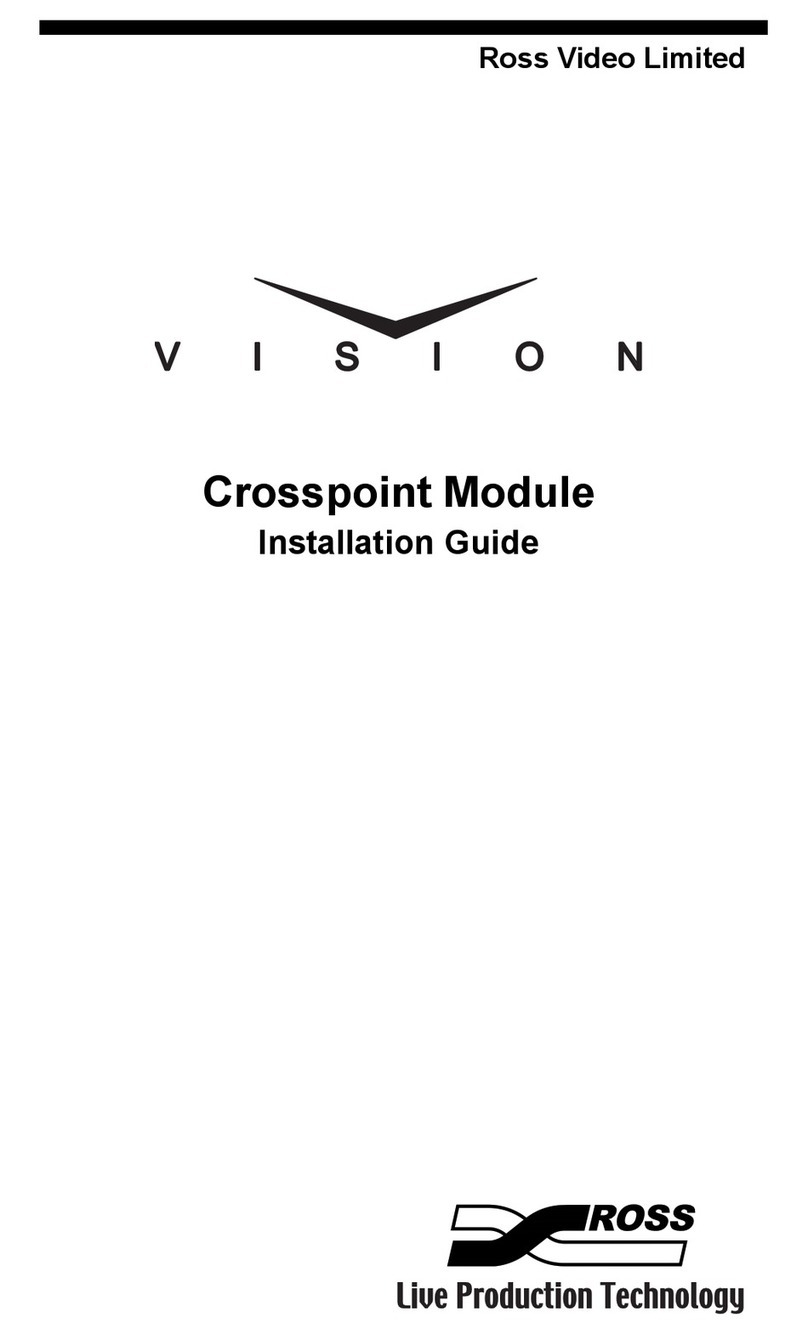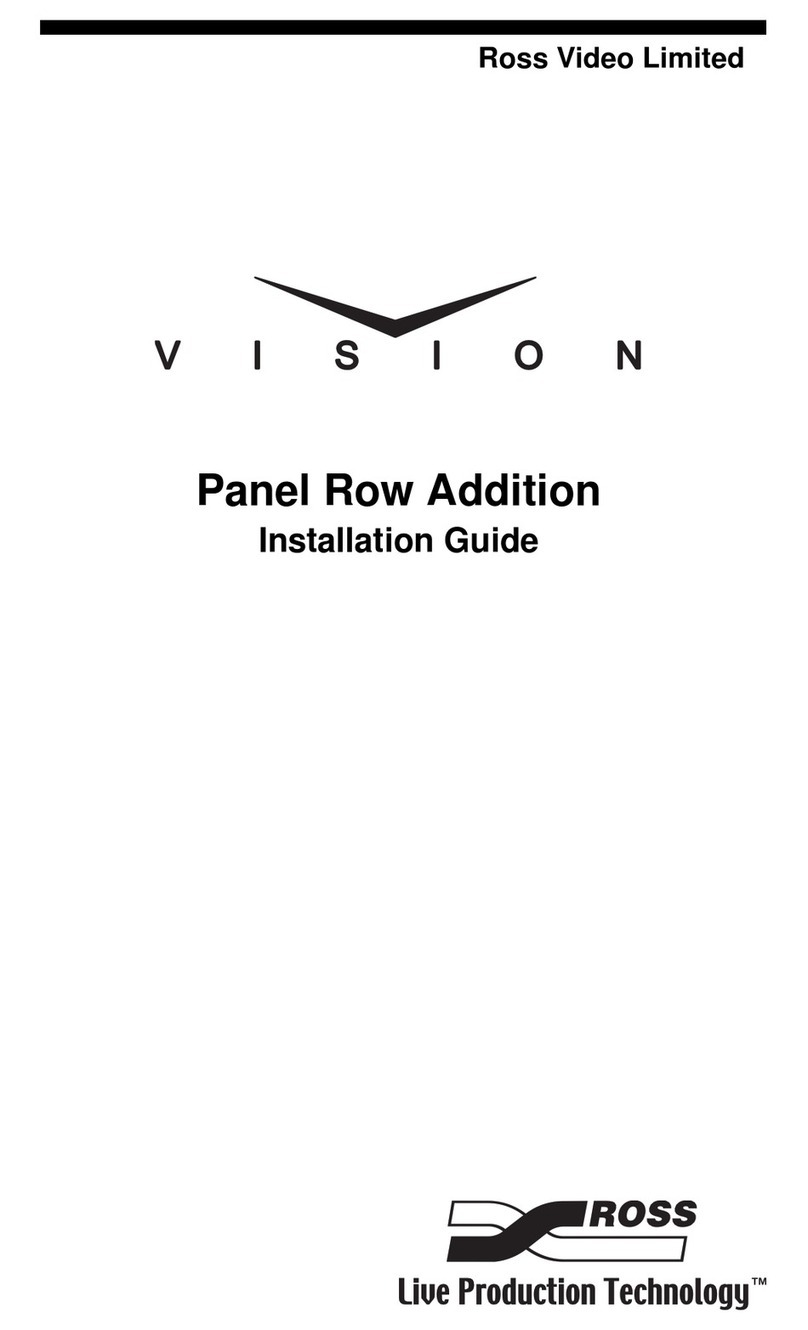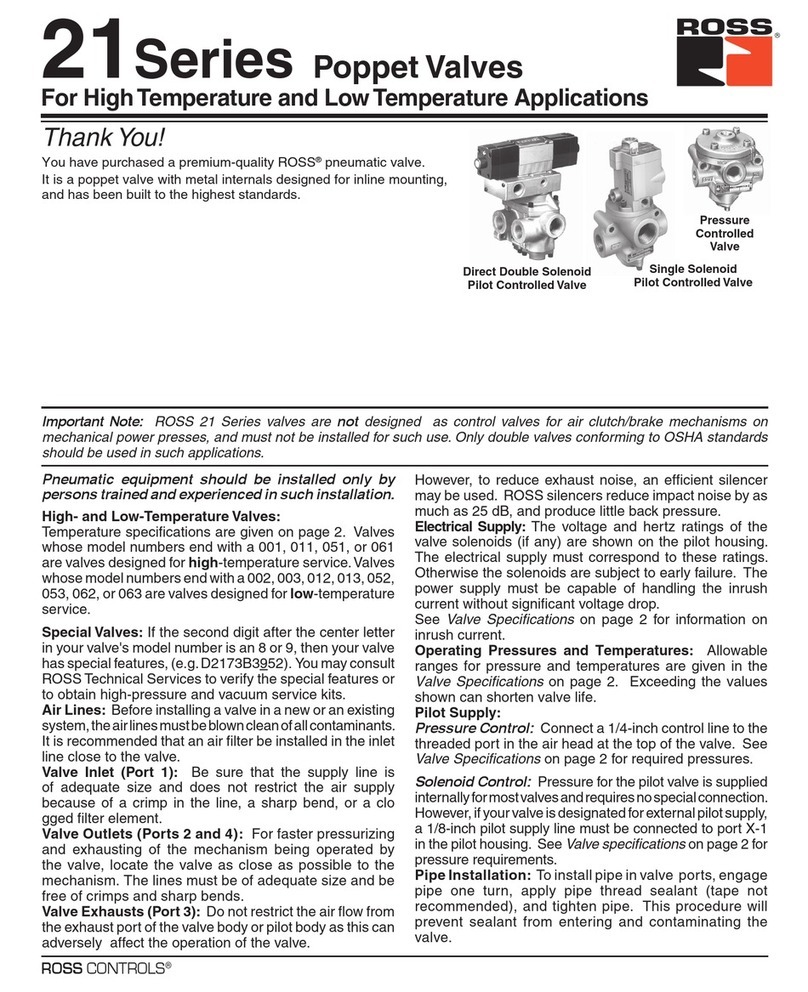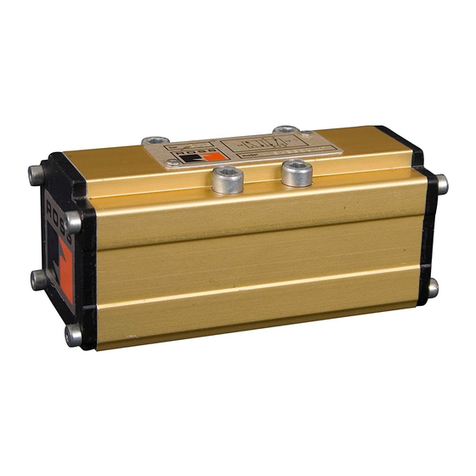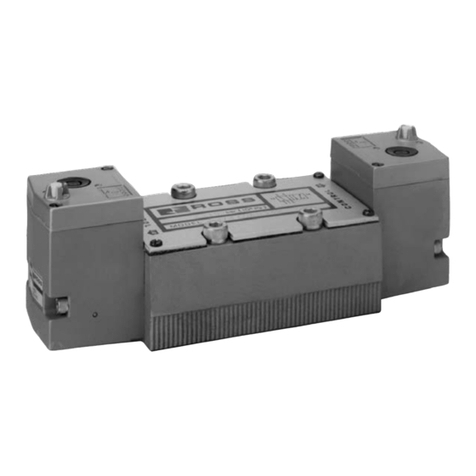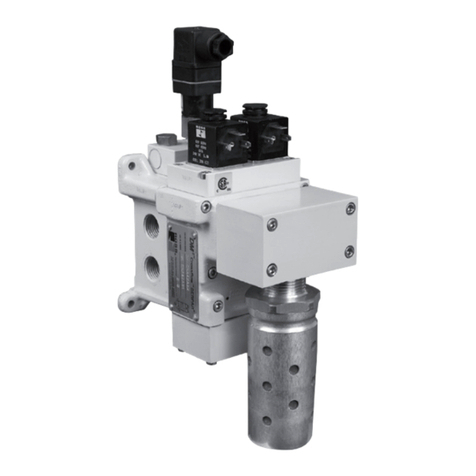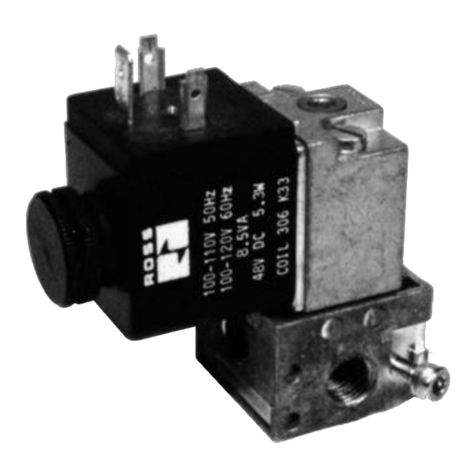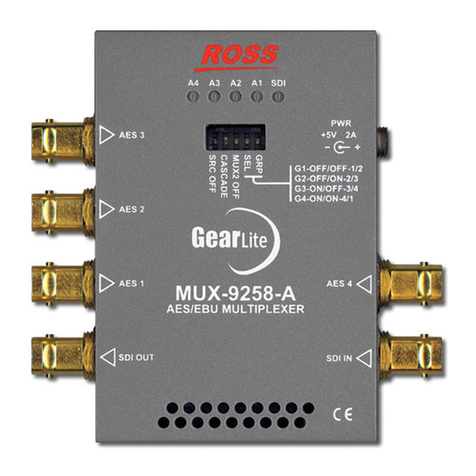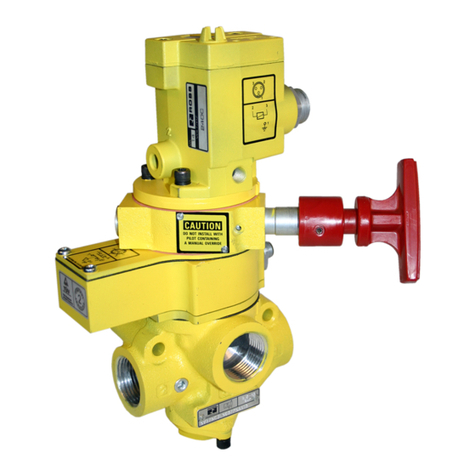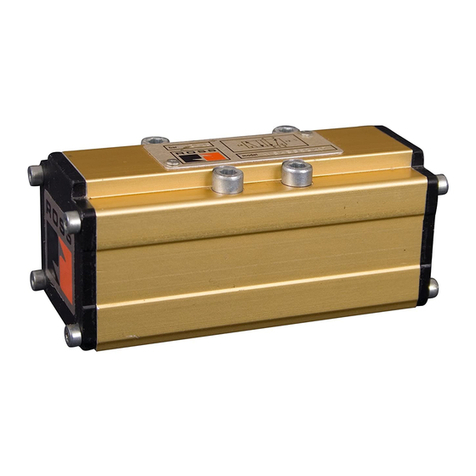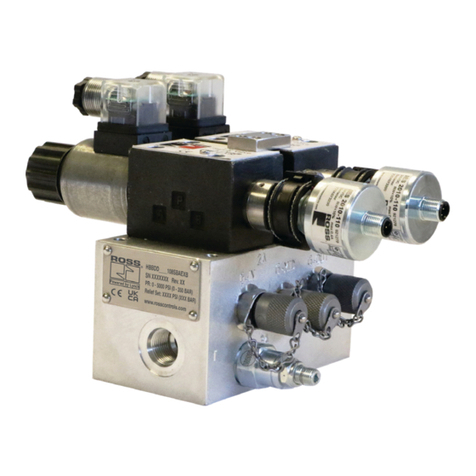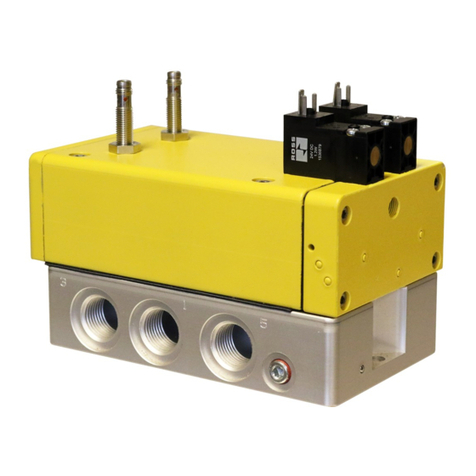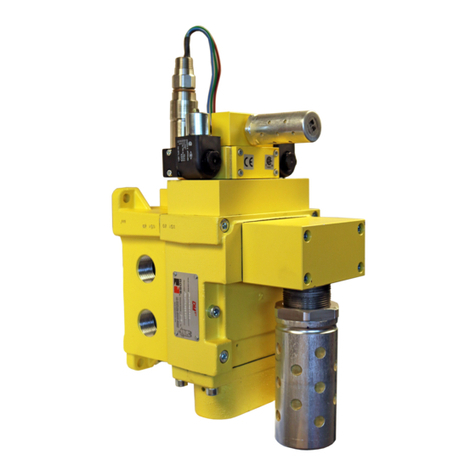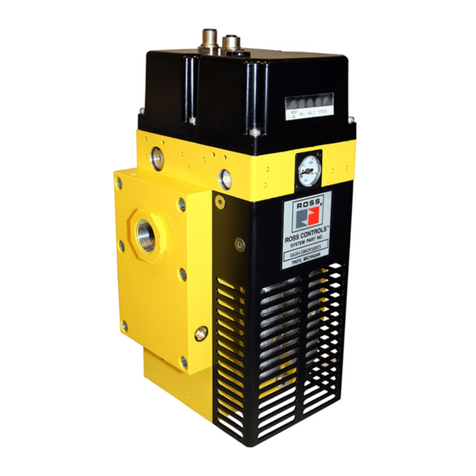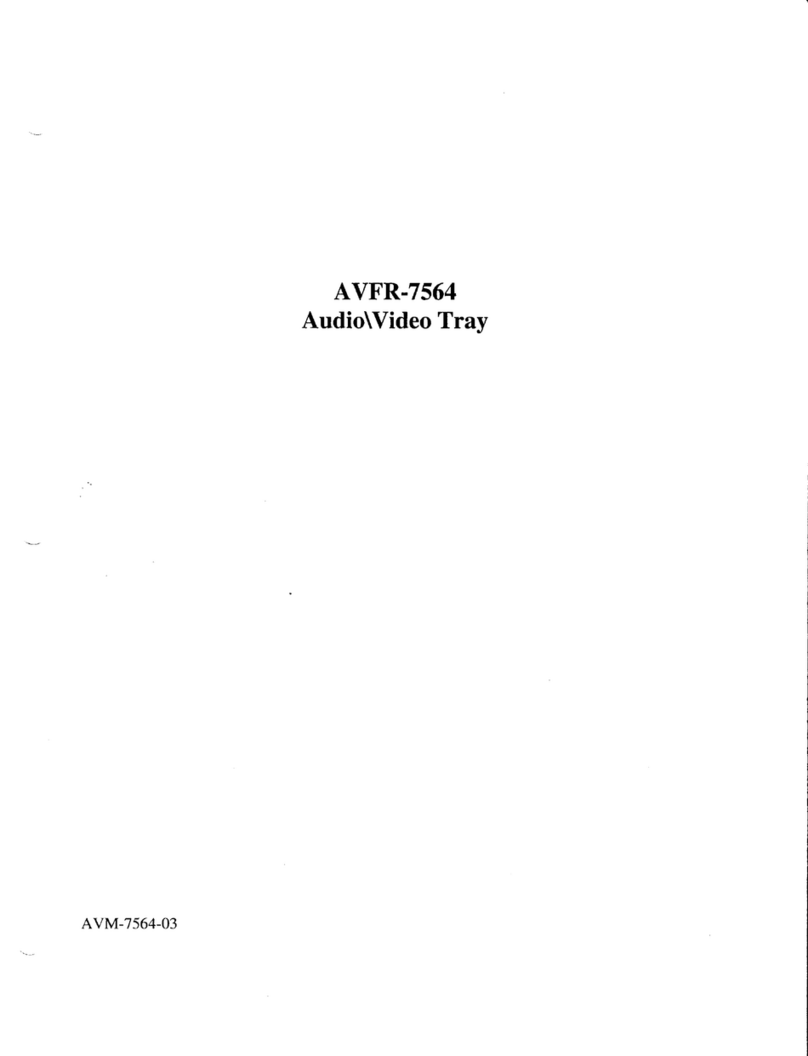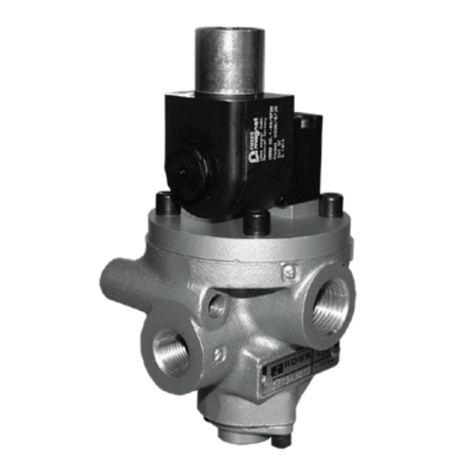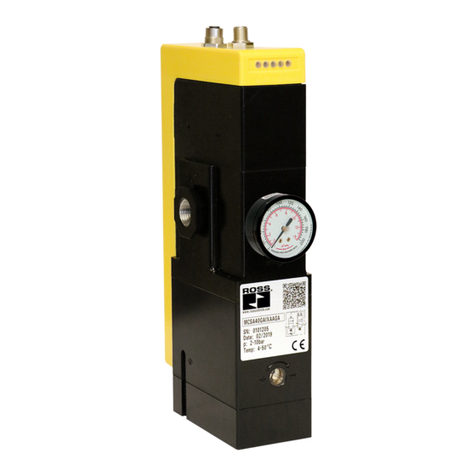
HDBH Series Operating Instructions
3
www.rosscontrols.com
The HDBH system is a sandwich-mount device that is designed to be installed directly
between a manifold and a directional valve. In applications where installation on a
manifold is not practical, a mounting kit can be used to facilitate installation of the
HDBH valve in-line between a directional valve and actuator (cylinder). In applications
where higher ows are needed, there is an option to to combine both the A and B
ports to double the ow capacity of the valve. The Flow Doubling In-Line Mounting Kit
converts the HDBH valve to a single-line blocking valve.
The unit cannot be used by itself. It is designed for installation in a machine. ROSS
and its suppliers will assume no liability in the event that the system or parts thereof
are not used in accordance with their designated use or if modications are made in
a non-authorized manner.
Any drawings, hydraulic or electric circuit diagrams, parts lists and acceptance
certicates (inspection reports) supplied do not form a part of these operating
instructions.They are supplied for the purpose of illustrating the unit or procuring parts.
2.1.1. Safety Function According to ISO 13849
The HDBH Dual Block & Stop system is designed in accordance with the requirements
listed in ISO 13849-1 and -2. The HDBH’s “fail-to-safe” safety function is ensured even
in case of a fault within the valve (e.g., caused by power loss, wear, contamination, or
similar situations).
The safety function of the HDBH Series Dual Block & Stop system is to only supply
ow into and out of a cylinder or designated portion of the hydraulic machine/system
when the two valve elements are actuated simultaneously, but to block the ow in both
directions in both cylinder lines when both valves are shut-off or if only one of the two
valves is de-actuated.
A fault in the system where only one valve actuates when switching on or only one
de-actuates when switching off blocks normal ow of oil from moving downstream or
upstream in both ports. Monitoring of the two inductive position switches by the user’s
external safety control & monitoring system makes it possible to detect these fault
situations and to shut off and prevent further electrical energization of the solenoids
until the fault is cleared.
2.1.2. Common Cause Failure – CCF
The product has been engineered and manufactured according to the fundamental
and proven safety principles of ISO 13849-1 and -2.
Common Cause Failures (CCF) are failures of different components, resulting from
a single event. CCF are not to be confused with cascading faults or common mode
faults. Common cause failures can cause loss of the safety function, especially in dual
channel circuits where both channels could fail simultaneously due to a single event.
• Maintain hydraulic oil quality, i.e., proper ltration.
• Operate in accordance with the Technical Specications. See page 5.
• Install the valve such that the normal stroke travel of the valve elements is
perpendicular to the main direction of machine vibration and/or mechanical shock.
• Do not use a test pulse longer than recommended by the HDBH Integration Guide.
• Avoid external magnetic elds.
2.1.3. Diagnostic Coverage
A diagnostic coverage of 99% is achievable through appropriate integration of the
HDBH Series Dual Block & Stop system into the safety control system. The monitoring
system must constantly compare the state of each valve’s inductive position switch
(Switch 1A and 1B) with the state of the safety control system outputs to the valve
solenoids (Sol 1A and 1B). Detection of a fault by the safety control & monitoring
system must trigger a shut-off of the safety controller’s outputs to the valve solenoids
(Sol 1A and 1B).
2.1.4. Fault Modes
Note that normal operation requires that Sol 1A and 1B be energized simultaneously for
switching the HDBH system on, and de-energizing both Sol 1A and 1B simultaneously
for switching the HDBH system off.
NOTE: The switches are supplied with both NC and NO contacts. The statements
below only refer to whether or not the switches are actuated.
Faults that could occur during normal operation are:
Sol 1A and 1B energized simultaneously
Switch 1A ON, Switch 1B OFF
Switch 1A OFF, Switch 1B ON
Switch 1A OFF, Switch 1B OFF
Sol 1A and 1B de-energized simultaneously
Switch 1A ON, Switch 1B OFF
Switch 1A OFF, Switch 1B ON
Switch 1A ON, Switch 1B ON
2.1.5. Foreseeable Misuse
WARNING
Risk of Injury!
Misuse may result in injury or damage.
fThe product must be used exclusively as intended.
Foreseeable misuse includes:
• Bypassing the safety function or diagnostics.
• Replacing the safety valves with unauthorized valves.
• Tampering with the position switches.
• Failing to utilize the position switches to verify valve operation on every cycle -
when energizing and de-energizing.
• Allowing continued operation of the valve when a fault is detected.
• Operating outside the Technical Specications.
2.2. Responsibilities of the System Owner
The HDBH must be integrated to meet the Category and/or Performance Level
requirements of the safety system, as determined by the risk assessment of the machine.
Observation of general requirements pertaining to hazards:
• Unusual noises, vibration, defects or damage is to be remedied immediately as it
may point to potential hazards.
• No maintenance work may be done on the hydraulic system and power units
as long as they are under hydraulic pressure or the power supply has not been
switched off.
• Prior to performing any maintenance work, pressure accumulators are to be
depressurized.
• Note the load pressures present. Also note any loads applied. If necessary, make
sure that the loads are secured or properly supported.
• Hydraulic systems may only be operated by properly trained and instructed
personnel.
• All safety devices and equipment are to be checked to see that they function
properly.
• Safety devices and equipment must not be removed or bypassed.
• General safety and accident prevention regulations pertaining to operating the
unit/system are to be adhered to.
• Comply with the further requirements of ISO 13849 (e. g., MTTFD, CCF, DC, PLr,)
if you intend to use the product in higher categories (2 to 4).
• Check the valve at least once a month to ensure its proper operation.
• Make sure that the fundamental and proven safety principles in accordance with
ISO 13849 for implementation and operation of the component are complied with.
• Selection and installation of replacement valves must take place in accordance
with the manufacturer’s specications.
2.3. Safety Instructions
The HDBH Series Dual Block & Stop System features a state-of-the-art design.
Reliable and safe operation cannot be ensured unless all the instructions, settings
and output limits applicable to the unit supplied are adhered to.
The systems involved are pressure-generating systems whose components feature
pressurized liquid; consequently, the systems may pose a hazard if not dealt with
properly.
2.3.1. Additional Safety Considerations
• When implementing surge suppression measures, be sure to check whether or
not this extends the valve system shut off response time which could extend the
machine stopping time.
• In case of high levels of machine vibration, use appropriate vibration-reducing
elements when installing the valve system.
• Operate only with the proper supply voltage. Improper voltage can damage
solenoids and switches.
• Excessive hydraulic uid temperature can damage valve seals as well as cause
premature degradation of hydraulic uid. Both of these situations can cause
improper operation of the hydraulic system.

